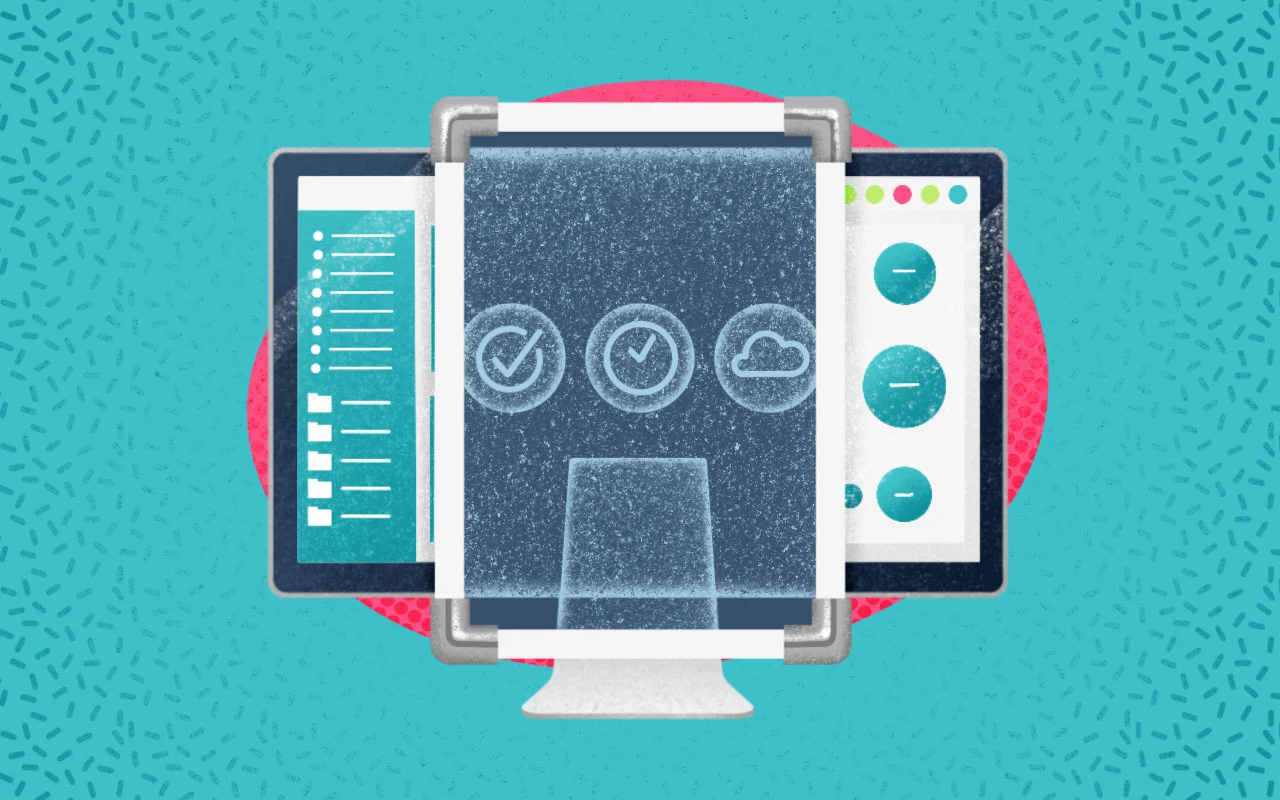At the service desk, your number one question is: how quickly can you solve an incident and get customers back to work? But, if you’re running into constant incidents and problems that could’ve been prevented and your customers and agents are feeling frustrated, you might be curious if you’re using the right tools. That’s where ITOM vs. ITSM comes in. These two different functions are quite similar but have specific distinctions that make both of them helpful.
Important IT Service Desk Definitions
Before we dive in, let’s cover a few basic definitions of different types of help desk software and terminologies. The following can, and should, work together, whether manually or through automation, and each represent and support a different aspect of the service desk’s capabilities.
ITSM Definition
Cloud-based IT Service Management (ITSM) can reduce costs by as much as 50% and increase productivity by 30%. ITSM is defined by Axelos as:
“The implementation and management of quality IT services that meet the needs of the business. IT service management is performed by IT service providers through an appropriate mix of people, process and information technology.”
In other words, ITSM refers to the entirety of activities directed by policies, organized and structured in processes and supporting procedures, that are performed by an organization to design, plan, deliver, operate and control information technology services offered to customers.
ITSM includes a variety of functions, including incident and problem management, and change and release management.
ITOM Definition
IT Operations Management, ITOM, is defined by Axelos as:
“The function within an IT service provider that performs the daily activities needed to manage IT services and the supporting IT infrastructure. IT operations management includes IT operations control and facilities management.”
In other words, IT operations management is a set of administrative procedures that manage all the components of your organization’s IT infrastructure. ITOM can be integrated into an ITSM platform.
A few functions of ITOM include:
- Network Infrastructure Management
- Server and Device Management
- Computer Operations/Help Desk
IoT Definition
In the discussion of ITOM vs. ITSM, it’s also helpful to understand the definition of Internet of Things, or IoT.
IoT is defined as:
“… the network of physical objects—“things”—that are embedded with sensors, software, and other technologies for the purpose of connecting and exchanging data with other devices and systems over the internet. These devices range from ordinary household objects to sophisticated industrial tools. With more than 7 billion connected IoT devices today, experts are expecting this number to grow to 10 billion by 2020 and 22 billion by 2025.”
Why does this matter in the scheme of ITOM vs ITSM? Because devices in the IoT can impact the infrastructure and service delivery. Furthermore, IoT can include important integrations in the IT infrastructure.
ITAM Definition
IT Asset Management, or ITAM, answers a few important questions at the service desk, including: What assets are you out of? What do those assets cost? Are your warranties intact?
ITAM is defined as:
“A generic activity or process responsible for tracking and reporting the value and ownership of assets throughout their lifecycle.”
A comprehensive asset management tool will help keep track of and alert you of any issues with all of the above. An IT asset management tool will track software (software asset management, SAM), hardware, licensing compliance, and license expiration and will integrate with IT service management activities. The tool will mark the location of every asset and facilitate changes in location – be they physical or digital. An example of this is when a laptop is checked out to an employee who moves to another work location. Effective ITAM tools will also allow you to track delivery, repairs, and replacements of hardware.
This is different from ITOM and IoT because this isn’t necessarily looking at the current functionality of each asset, but the licensing status and age of each asset.
What’s the Difference Between ITSM and ITOM?
With the previous definitions in mind, it is easy to feel a little muddy on the differences between them – especially when it comes to ITOM vs. ITSM.
The difference between ITSM and ITOM comes down to a few key points.
- First, ITSM is more focused on the way IT teams provide and deliver services – that’s to say that ITSM is more customer-centric.
- On the other end of the spectrum, ITOM is a subset of ITSM and is part of the ITIL service lifecycle.
- Furthermore, ITOM is focused more on the tools, environment, and processes for the services delivered by ITSM.
- Both have elements of event management.

ITSM and ITOM are different, but ultimately work together to improve employee experience and prevent loss of productivity. Although they have different functions and activities, the IT department ultimately needs both together to lower business impacts of IT downtime and move to become more of a value center model.
So why did we discuss the definition of ITAM earlier in the post? Because without ITAM in place, ITSM and ITOM won’t function optimally. ITAM is the bridge between ITSM and ITOM. To hone in even closer, a Configuration Management Database (CMDB), which is the component to identify configuration changes, track asset movement, and understand IT service dependencies, is needed to enable ITAM to bridge that gap between ITSM and ITOM.
Benefits of ITOM and ITSM
The big question with any new process or software in the IT department is “why?”
When used together, ITOM and ITSM can:
- Help you minimize downtime
- Increase productivity
- Optimize costs
- Create automated resolutions
- Enhance IT visibility and observability
- Enable better analysis of IT services
The goal of ITSM and ITOM is to make a better experience for the employee and therefore the customer.
Can You Merge IT Service Management and IT Operations Management?
The next big question is how to integrate ITOM processes into your service desk.
In some ways, you likely already have these processes in place – especially if your service desk uses ITIL processes. That’s because ITOM is baked into the ITIL service lifecycle. However, ITOM operates on Service Operations Guidelines, which standardize the management of recurring service operations by monitoring and controlling all tangible and non-tangible components of an organization’s infrastructure.
Within your ITSM tool, you can make ITOM easier with remote monitoring and end-to-end IT infrastructure visibility. This is possible through modules within the ITSM tool which operate with ITIL processes.
Together, ITSM and ITOM can help you reach a more predictive approach to service delivery. To learn how to merge your ITSM and ITOM strategies, get a demo today.

Infographic – The status of SMB IT in 2026
Explore how AI, automation & integrated ITSM/ITAM are reshaping IT strategy—at every scale.


